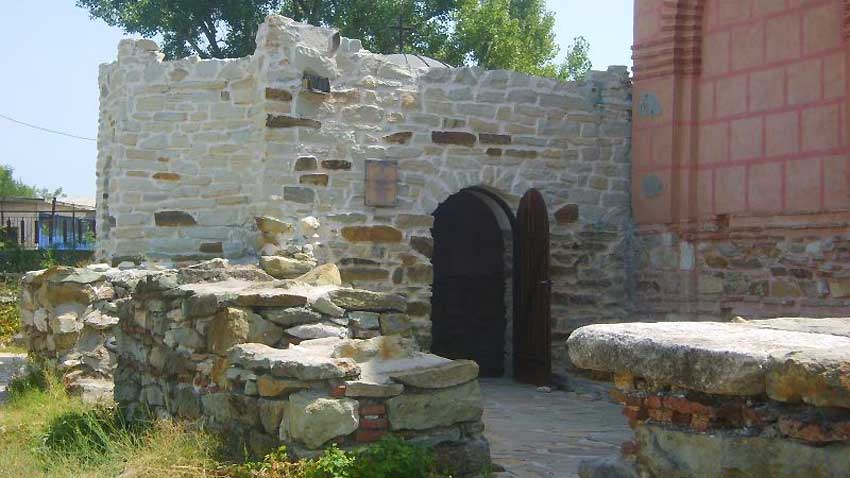Number 25 in the list of the 100 National Tourist Sites in Bulgaria is the St. John the Forerunner Orthodox monastery. Its ruins are situated on beautiful heights above the Arda River which crosses the town of Kardzhali. The monastery was part of the medieval complex bearing the name of St. John the Forerunner.
It is supposed that the monastery was established in the 6th or the 7th century at a place where the ruins of older typically Byzantine-styled churches stood. What is interesting is that this temple is of the so-called "Athos type" and was probably built at the same time with some of the churches on Mount Athos. In the past, the whole site was the spiritual center of one of the largest medieval dioceses - Ahridos.
The remains of the ancient monastery were discovered in the 30s of the 20th century and nearly three decades later, during construction works, the ruins of its church were also found. Later, when archaeological work started, experts discovered remains of solid walls surrounding a large monastery complex. But what truly astonished archaeologists was that the walls of the old church were covered with unique frescoes.

Historical records and preserved ruins have given rise to claims that the large complex of buildings with a church turned at the end of IX and the beginning of X century into a bishop’s and metropolitan center. Evidence for this provide unique artifacts found in and near the temple. Archaeologists discovered five masonry tombs. One of them is located in the church itself and was sealed. After careful opening, archaeologists were surprised to see the relics of a senior Christian cleric, dating back to the end of XII and early XIII century. There are claims that these are the relics of Patriarch Euthymius /the most famous medieval Bulgarian scholar, cleric and saint/, but others reject the claims because of lack of supporting evidence.
Archaeologists found fully preserved stole (religious garment) interwoven with gold with unusual decorations and church relics sewn into a cross made of fabric. This finding confirms the assumption that in the Middle Ages today’s Kardzhali used to be an important Christian center. It is believed that the stole is extremely expensive and was made in Constantinople.
Perhaps in later times the temple was destroyed. Then it was rebuilt again for a very short time but during the Ottoman invasion in the Balkans the whole complex was finally turned into ruins and sank into oblivion.
English: Alexander Markov
Photos: svetimesta.com and bg-patriarshia.bgThe Regional Museum of History in Turgovishte in the old, Revival-time part of town, called Varosha, houses over 30,000 exhibits. Some of the artifacts, discovered by archaeologists in these parts, go as far back as the Neolithic age. The..
The house of Vasil Levski, Bulgaria’s national hero and organizer of the anti-Ottoman movement in the 19th c. has always been one of the most visited memorial museums in this country. The building itself is modest and its style is typical for..
In Bulgaria’s Northwestern corner a fantastic rocky landscape meets the eye – the towering Belogradchik rocks inspire awe and deference in any onlooker. The area is studded with yawning abysses, canyons and caves, gateways to the kingdom of..

+359 2 9336 661
